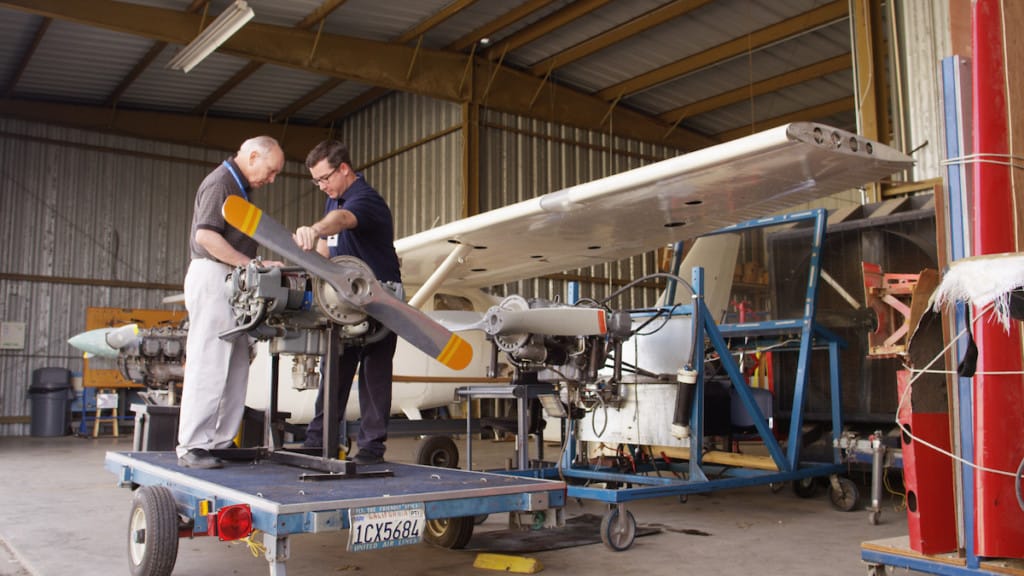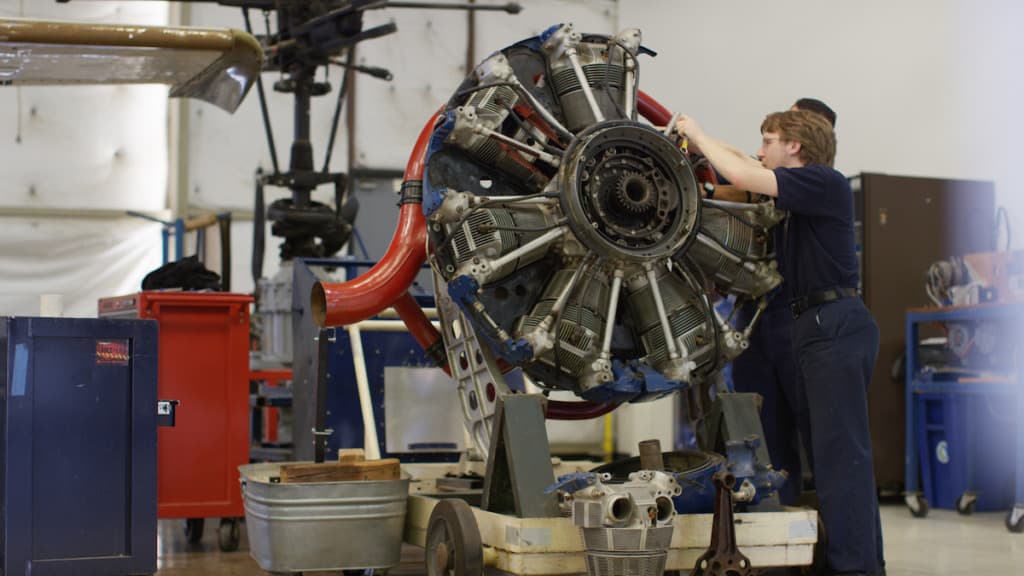If you’re the kind of person who has their eye on the sky, or has always wondered what makes an aircraft work, working as an avionics technician or aviation maintenance technician may be a good fit for you. Becoming an aviation maintenance technician may offer a rewarding and lucrative career.
Learn more about the different types of aviation mechanic jobs that exist, how to get certified, and different aircraft maintenance training that may be right for you.
What is Aviation Maintenance?
Aviation maintenance is an overarching field of everything that goes into keeping aircrafts capable of flying. This can include:
- Diagnosing and repairing problems
- Replacing parts or entire systems like engines, brakes and electrical systems, hydraulics, pneumatics, avionics, and more
- Completing inspections
- Assessing flight data to find potential malfunctions to an aircraft.
Routine maintenance keeps an aircraft in operating condition—also called “airworthy”— meaning it is safe to fly. The regulations from the Federal Aviation Administration (FAA) dictate safety standards and maintenance schedules. Maintenance schedules can be based on hours flown, number of days since last inspection, number of trips, or a combination thereof. It can also be done when issues are identified with an aircraft.
What Kinds of Aircraft Maintenance Jobs Are There?
Most mechanics are considered generalists who work on a variety of aircraft, like jets, airplanes and helicopters, but there are plenty of aviation jobs. Some mechanics specialize in a single type of aircraft—such as a helicopter mechanic—or specialize in systems—such as the engine, hydraulic system or electrical system. Below, you will find a variety of aircraft mechanic and service technician jobs.
Aircraft Mechanics and Service Technicians: These technicians diagnose, adjust, repair, or overhaul aircraft engines and assemblies, such as hydraulic and pneumatic systems. Includes helicopter and aircraft engine specialists.
Airframe and Powerplant (A&P) Mechanics: These certified generalist mechanics repair most parts of an aircraft, from the engine to the air-conditioning. A&P mechanics are also responsible for routine maintenance. While working at A&P mechanic jobs, aircraft mechanics are trained in the use of precision instruments that measure wear and tear and identify issues. Some of these instruments include x-rays or magnetic/ultrasonic inspection equipment used to identify cracks that can’t be seen via a craft’s exterior or the human eye. Mechanics keep an eye out for corrosion or cracks in the body, wings and tail of an aircraft. They repair these cracks with metal, fabric, wood or composite materials. Once maintenance is completed, mechanics test equipment for safety and record all fixes that took place.
Inspection authorized (IA) mechanics: IA mechanics are certified in Airframe and Powerplant. They inspect aircraft and are able to perform the widest range of maintenance activities of any other aircraft maintenance role. They are often responsible for comprehensive annual inspections.
What Does an Aircraft Mechanic Do?
The day-to-day responsibilities of an aircraft mechanic include diagnosing both mechanical and electric problems, repairing parts of an aircraft including wings, brakes and various systems (electrical, brake, etc), hydraulics, pneumatics, avionics, and replacing broken or defective parts.
Aircraft mechanics may also be called aircraft maintenance technicians, and aircraft technicians. An aircraft maintenance tech tests aircraft parts and reviews manuals to identify the best procedures for repair. Once maintenance is completed, they test the work and the parts to make sure they are performing correctly. Aircraft mechanics are responsible for keeping detailed records of performed maintenance on an aircraft.

